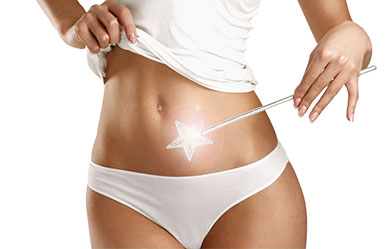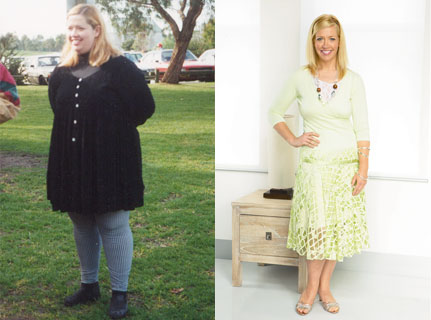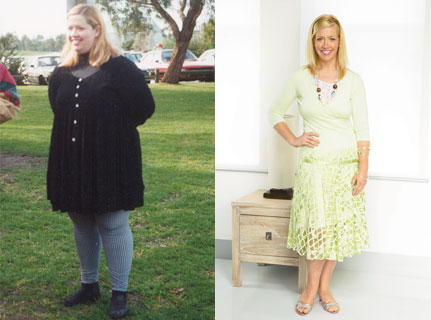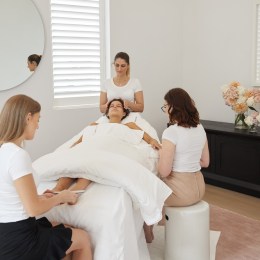
Aesthetic salons, spas and clinics are key destinations for people dedicated to looking and feeling better, and are willing to pay the price if they have faith they will get results.
Yet however good your treatments and the products you recommend – whether for skin rejuvenation or correcting conditions such as acne, or for body shaping and fat/cellulite reduction – if a client has a less-than-ideal diet and lifestyle they could be undoing all your good work. Or not letting your good work do its work!
Unfortunately, that will have a rebound effect on your business with them in the future.
‘Investment is high in weight loss and detox,’ says SPA+CLINIC’s Kirien Withers, ‘so we are crazy not to be making our industry a one-stop-shop for weight loss, exercise classes and activities. ‘You can get your clients engaging up to a few times per week, organised by your brand.
‘Clients expecting to find a range of in-demand spa, beauty and emotional and social wellbeing services and products within our doors broadens our client catchment and deepens our roots.’
When choosing a system to align with it should provide clients with a solution combining weight loss with proven health benefits and nutritional counselling that is sustainable and economically feasible for lasting results. Many such programs exist that SPA+CLINIC will explore, but one that has captured our attention is Ultra Lite.
‘Our company has been able assist a number of top day spas, beauty salons and fitness centres to break into the huge growing wellness market,’ says owner and CEO Malcolm McLean. ‘It is a very profitable business model with the support of 12 health funds.
‘I believe salons, spas and clinics are ideally suited to embracing this concept for the following reasons:
- Clients come with the expectation that they are to pay a fee for a treatment
- Our solution provides full training and support without the need to employ extra, specialist staff
- Gyms are focused on memberships; pharmacies are busy trying to manage their PBS obligations and on selling product.
‘This is where the aesthetics industry can focus on genuine fee for service to bring about body transformation, improved health outcomes and long term weight and health management.
‘Existing staff can be trained provided that they have the passion to take the journey with their clients. Training takes two days with one of our licensed trainers.’
Ultra Lite is what is known as a ketogenic diet. The concept is not new – it has existed in many forms and has similarities to popular diet regimes such as the Atkins, South Beach and Paleo. A ketogenic diet is one where the majority of kilojoules are derived from good fats and protein, and forces the body into a process called ketosis, where fats are burned instead of carbohydrates for use as energy.
As with other ketogenic diets, ‘Ultra Lite is not product-driven with meal replacements and pre-packaged foods,’ says Malcom McLean. ‘We focus on education and empowering the Ultra Lite-trained practitioners to have nutritional confidence and to be remunerated for their knowledge rather than just products. This has proven to be a real differentiator in the marketplace’.
So should we ditch the old food pyramid, embrace all fat and feast on fried chicken?
‘Not exactly,’ says Dr Cassandra Forsythe-Pribanic, American fitness and nutrition scientist writing for Weight Loss 4 Life, an Australian non-profit online resource run by a team of weight management professionals.
‘Consuming the wrong fats won’t help you lose weight, and if you produce too many ketones (ketoacidosis) you’ll put your health at risk. What you should do is find a qualified consultant to guide you through the process.’
A proper ketogenic diet generally limits carbohydrate intake (but not simple carbs) to less than 50 grams per day. It contains high quality, whole-food proteins that are not laced with preservatives or sodium and have plenty of colourful vegetables and fruits to provide fibre, antioxidants and potassium to balance sodium,. Plus plentiful whole-food fats, especially those high in unsaturated fats such as avocadoes, egg yolks, fish, fish oil and krill oils, olives and olive oil.
Carbohydrates re the major promoters of insulin, but not all carbs are ‘bad’ and timing is important. High-fibre carbs from non-starchy vegetables (such as greens and colourful vegetables) produce the least amount of insulin and some starchy veggies (like sweet potato, squash and peas) produce a bit more insulin, but their high fibre content is important. Fibre helps keep the body regular.
Simple carbs, and even fruit carbs, are used best by the body after exercise, and sometimes before. At this time, your muscles are primed to use that insulin for repair and re-growth instead of for fat storage.
Processed foods, such as pre-packaged microwave meals, are loaded with sodium to prevent spoilage. This sodium causes water retention that in turn exacerbates the look and feel of bloat (that resembles weight gain) and aggravates the appearance of cellulite. This similarly applies to sodium in canned foods (eg. soups, fish) and condiments such as soy and teriyaki sauces.
Alcohol is also an issue – it acts just like insulin, causing the body to store fat and prevent it from using fat for energy.
Ketogenic diets help control blood sugar and minimise insulin spikes. When we eat too many carbohydrates, blood glucose levels rise rapidly. This causes an equally rapid insulin response from the pancreatic gland. The insulin disperses excess blood glucose, which causes feelings of hunger all over again.
Malcom McLean says Ultra Lite is being used in a number of Australian spas and clinics in conjunction with medical aesthetic body treatments to enhance the overall fat loss process. ‘This also helps clients’ skin tighten beautifully as they become smaller, and problem areas like hips and thighs have a greater chance of shifting more quickly,’ he says.
‘An holistic approach equals improved results for clients – skin and body health is about more than external treatments,’ says Victoria Fox, owner of the Shrinc Clinic in Melbourne, that specialises in non-invasive skin and body enhancement with systems such as Endermologie.
‘So many practitioners in the cosmetic industry promote a low carbohydrate nutrition program in combination with cosmetic treatments,’ she says.
‘But a diet rich in EFAs (essential fatty acids) helps provide the skin with the nutrients it needs to better respond to medical aesthetic treatments. Among other things it promotes collagen production and skin cell growth.
‘We have found that the combination of medical aesthetics treatments and the Ultra Lite system to achieve the greatest results with our clients.’
But it’s results that speak and an early adopter of the Ultra Lite system is a a case in point.

Fifteen years ago Samantha Ince (above) lost 48kg in less than 12 months and has maintaind her weight loss – indeed, has lost another 2kg since then.
‘The road was never straight and narrow,’ says the erstwhile ’emotional eater’, now calisthenics teacher, cyclist and avid hiker.
‘But the one thing that kept me going was a picture of the ‘old’ me and the knowing I could NEVER go back to that lifestyle again ‘This program educated me on portion size, what was good for my body and how it was going to change the way I looked at food.’




